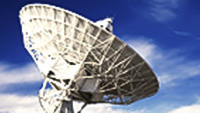Search and order online
Exposed: scenes from a spacewalk
- Video Online only
- Title Exposed: scenes from a spacewalk
- Released: 20/07/2017
- Length 00:02:21
- Language English
- Footage Type Exterior shot
- Copyright ESA/ROSCOSMOS
- Description
As part of ESA’s Expose-R2 project, 46 species of bacteria, fungi and arthropods were delivered by a Progress supply ship to the International Space Station in July 2014. Spacewalking cosmonauts Alexander Skvortsov and Oleg Artemyev attached the package to the outside of the Zvezda module on 18 August 2014, where it stayed until it was retrieved 18 months later.
This ‘Expose-R2’ is a miniature photochemistry laboratory that exposes samples to the harsh environment of space. Subjected to the full blast of the Sun’s energy as well as vacuum, radiation and temperature swings, they are helping researchers investigating how chemicals and microbiological life react to unprotected spaceflight – on a comet, for example. Previous Expose experiments have already shown that ‘water bears’ and a species of lichen can survive a trip into space.
This video shows scenes from a spacewalk with cosmonauts Gennadi Padalka and Mikhail Kornienko who were asked to photograph the Expose-R2 facility half-way through its stay in space, 10 August 2015 – the samples had travelled around the world more than 8500 times by then.
Expose-R2 was returned inside the International Space Station Station by Yuri Malenchenko and Sergei Volkov during a spacewalk on 3 February 2016 and stored ahead of return to Earth. The samples were held in sealed compartments and covered to block out all light.
The vacuum of space is sucking out the water, oxygen and other gases in the samples. Their temperature can drop to –12°C as the Station passes through Earth’s shadow, rising to 40°C at other times, and undergoing a similar process to the freeze-drying used to preserve foods.
The Expose series of experiments are exploring the limits of terrestrial life, whether the organisms can survive in space and how the full blast of solar radiation is affecting accompanying chemicals.
Earth is protected from the Sun’s full radiation by our atmosphere filtering out the hard-hitting short wavelengths that are damaging to life. It is difficult to recreate on the ground the full spectrum of the Sun’s light so these experiments in space are the only way to test how biological and material samples behave in conditions beyond Earth.
ESA has a long history of testing organisms and organic chemicals in the harsh environment of space. Previous experiments revealed that lichens and water bears can survive spaceflight unprotected, hinting at the possibility of species colonising planets via meteoroids.


